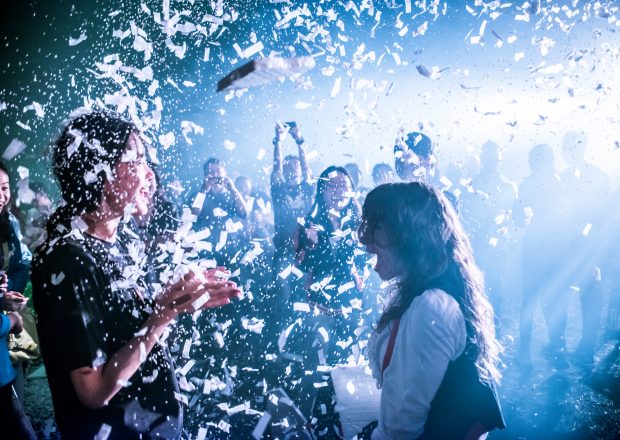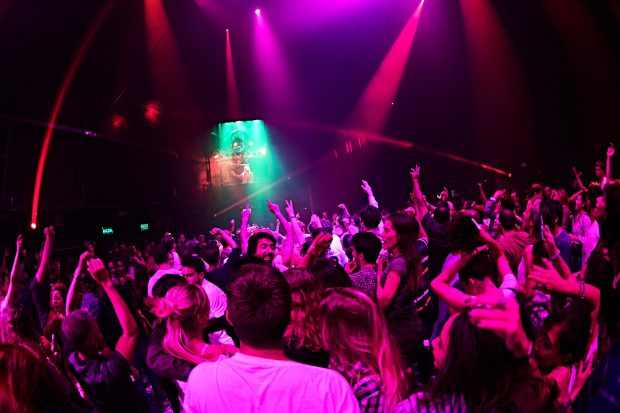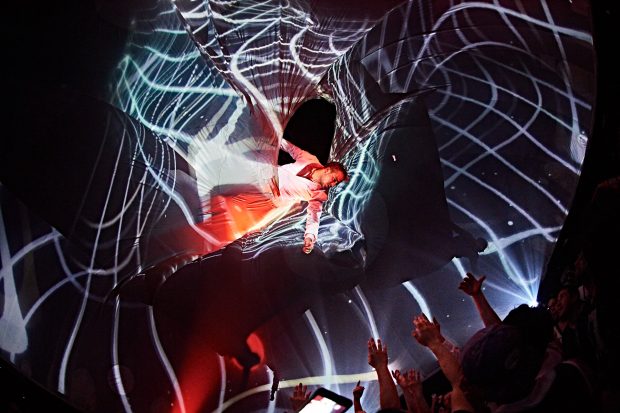Fuerza Bruta: Learning How to Enjoy the Moment
Created by Diqui James, Fuerza Bruta (the title is Spanish for “Brute Force”) is a postmodern theatre show in which the audience becomes part of the project. From April 23 to August 1, the interactive Argentinian performance is held at Jamsil Complex Stadium FB theatre in Seoul. The show evokes a swirling, interactive version of Cirque du Soleil, except streamlined, without the clowns, elaborate costumes or traditional circus acts.
Venue: Jamsil Complex Stadium FB theatre (near Sports Complex station, exit 7)
Tuesdays, Wednesdays, Thursdays: 8pm
Fridays: 3:30pm, 8pm
Saturdays, Sundays: 3pm, 8pm
Duration: 70 minutes
 Interview with Diqui James, director of Fuerza Bruta
Interview with Diqui James, director of Fuerza Bruta
Which aspects of the Korean culture did you focus on for the show?
Yes, after talking with Mr. Han, the producer of the show, I decided to make changes regarding the main stage, the running man and the DJ. I did not specifically focus on the culture of South Korea, but I’ve rather focused on South Koreans’ habits. In fact, they love to sing, dance, jump and scream during the show. That’s why we added the DJ scene at the end of the show so that people can enjoy it.
How many performers have performed during all the shows? How did you recruit them?
We trained more than 200 actors, looking for expressive people. In fact, in Fuerza Bruta, there are both calm and energetic moments so we need performers who are able to express those moods. We always look for our performers among actors and dancers. After arranging hearings in different parts of the world, we usually train them and see how they work together. Moreover, we also do live training so that the actors can learn how to interact with the audience.
Can you explain to us about the theme and how did you create the idea behind the show? What was your inspiration?
Well, Fuerza Bruta is an entertaining show, light and pleasant. It is like a celebration, inspired by carnivals and parties. It is not an intellectual show in which people need to think; it is rather a moment for partying. I want the audience to be part of the show and that’s why there are no seats and no limited stage. I hope it is an emotional journey for people.
How long does it take to prepare the show?
The preparation took two-weeks-set-up for the pre-production but several months in Argentina where we organized the show for Seoul. It is a very big production and involves many people. In particular, building the structure (a spectacular tent) in Seoul took a lot of time.
Especially, which aspect (music, light, theme, etc) should people pay attention to?
The truth is that I would not tell someone to pay attention to a certain thing. In fact, the combination of all the aspects, music, lights, actions, effects, and audience, is what makes this show energetic. If I had to highlight something to pay attention to, I would say the Korean audience’s reaction. In fact, the energy that people in Seoul bring to the show is spectacular.
Is there any country in which you have not performed but you are interested in?
We traveled a lot but we haven’t been to Africa or India. Maybe I would like to perform the show there. But I do not really think about it as a desire. I’ve rather prefer to perform where people want to understand our way of expressing life. Moreover, sometimes, when I am in a country, I would like to know more about other cities in the same nation. That is what happened in South Korea.
 Interview with Julia Astigueta, dancer and actress of Fuerza Bruta
Interview with Julia Astigueta, dancer and actress of Fuerza Bruta
How many people usually perform in a show?
There are 12 performers in each show but, since Fuerza Bruta started in 2010, many people worked for this project. For example, I started in 2015. It’s been almost 4 years. As time goes on, I get closer to the other actors and performing is really funny.
How do you prepare for the show?
Everybody does different things. Someone practices yoga, someone else goes to the gym, etc. It depends on the role of each one in the show. In fact, there are dancers, acrobats, and actors. Moreover, all the female performers are able to play the role of the other female colleagues and it is the same for the male performers. For instance, the runner is not always the same. We usually discover our roles a few hours before the begin of the show. So every day we play different scenes with different people and it makes me feel there is something new every day.
What was the usual reaction of the audience so far? Did they reaction change based on the country?
I found out the audience reacts in different ways based on the country. In Argentina, for example, people are very loud and like physical contact. From the other side, Asian people need a longer time to feel comfortable and enjoy the show. I think this is just a cultural difference since Asian people have a different idea of physical contact but, in the end, everybody enjoys. In Fuerza Bruta there is no line: the body language is the only way we use to communicate and this is pretty similar all over the world. Moreover, emotions are the same. Maybe people express them in a different way but everyone has fun during the show and feel the adrenaline.
Why people should come to see the show?
Because this is a unique show! It is different from all the other shows. People have fun and are also part of the project. In fact, the audience is the main character.
In the future, do think you will be interested in performing in North Korea? If so, which aspect do you think you will highlight?
Wow! That would be really interesting. Maybe the audience would have a very different reaction. I think we should be very careful about their reaction and their way to interact. Anyway, if I will have the chance to perform in North Korea, I would like to show them my idea of freedom.
By Alessandra Bonanomi, reporter for The AsiaN

























































